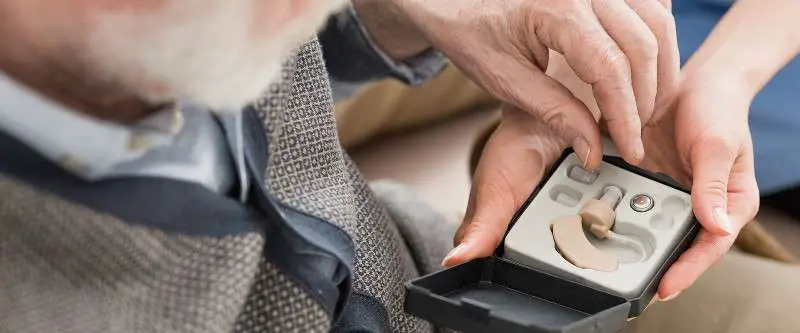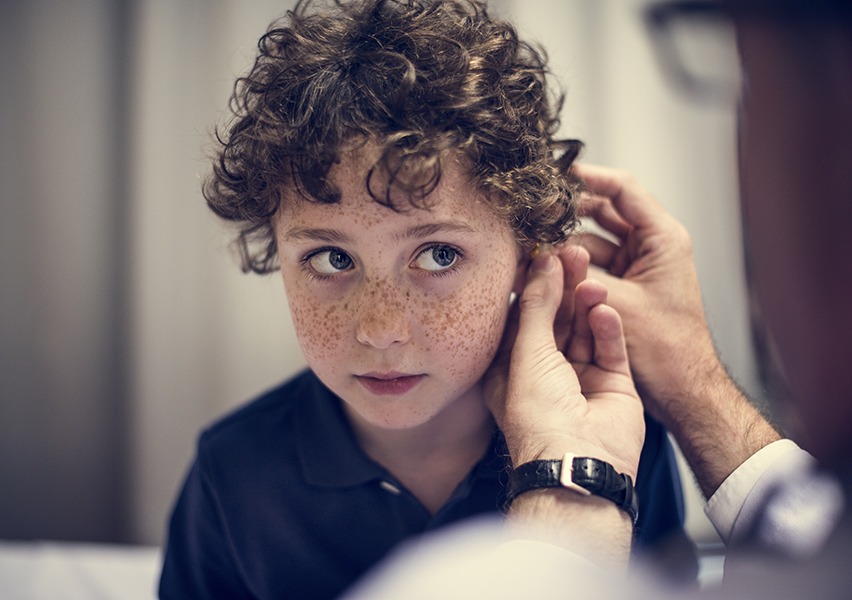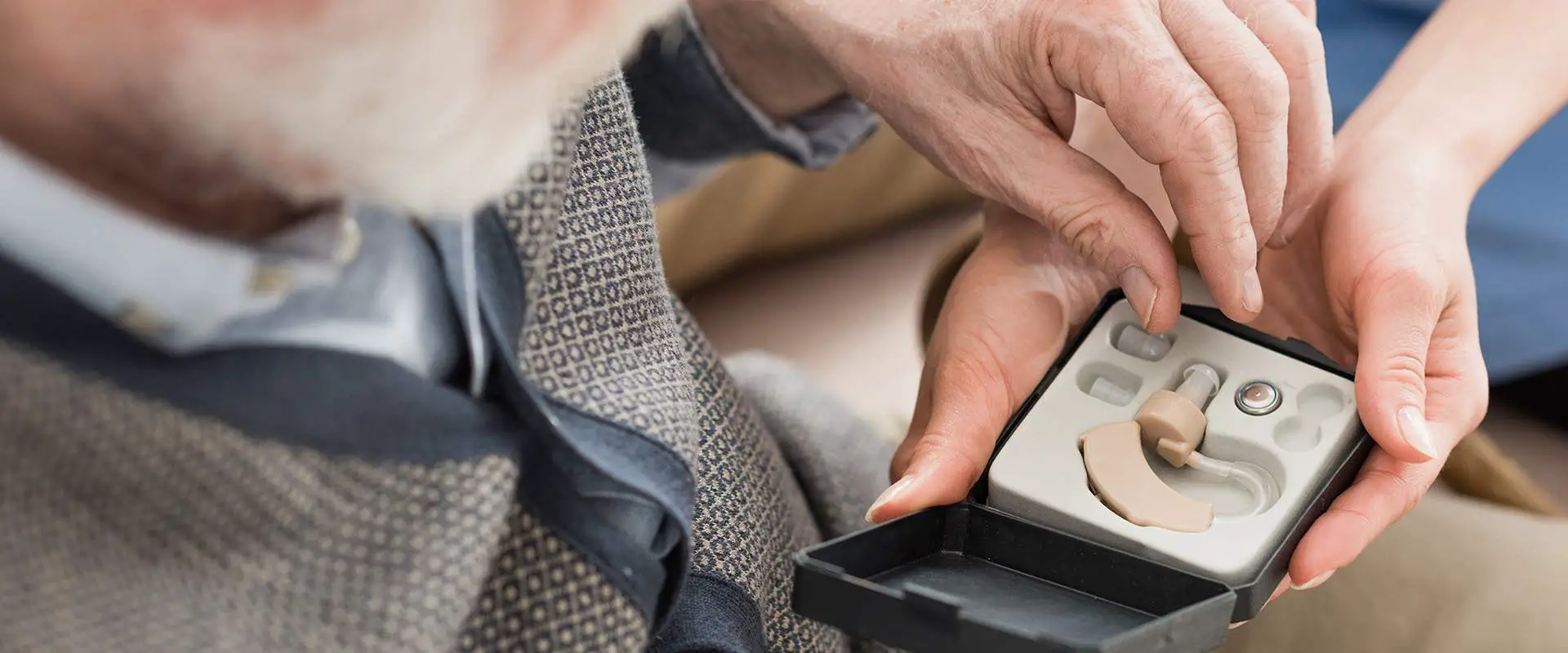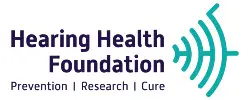Introduction
In a world where communication is central to human connection, the ability to hear shapes how we experience life. Music, laughter, the voices of loved ones — these are the sounds that make our world rich and meaningful. When that symphony of life becomes muffled or silent due to conditions like conductive hearing loss, the impact is felt deeply.
Conductive hearing loss, a condition that interferes with the sound transmission from the external and middle ear to the inner ear, can dramatically change the way people perceive their surroundings. It can create a sense of isolation, but also fosters resilience and determination in those affected by it.
Exploring the history of conductive hearing loss takes us on a journey through time — from ancient cultures trying to understand and alleviate this condition, through pioneering researchers and clinicians who have dedicated their lives to finding treatments, to the modern era where we have made incredible strides in understanding and managing this health challenge.
In this blog, we’ll delve into the past to bring light to the evolution of conductive hearing loss understanding, diagnosis, and treatment. We’ll explore this history with empathy and respect, acknowledging the hardships faced by those with hearing loss and the tireless efforts of the medical community to alleviate their burden.
The Earliest Recorded Cases of Conductive Hearing Loss
Historical texts indicate that human societies were aware of hearing impairments and made attempts to address them even in ancient times. However, the understanding and documentation of specific conditions like conductive hearing loss were still far off. The Hippocratic Corpus, a collection of medical texts from ancient Greece, makes several references to ear diseases and hearing loss, but doesn’t differentiate between types of hearing impairments.
It wasn’t until the 19th century that medical practitioners began to understand the complex nature of the auditory system and distinguish between different types of hearing loss. This period saw the first recorded instances of conductive hearing loss as a distinct condition. Physicians identified the importance of sound transmission through the ear’s various parts and how disruptions in this pathway could lead to hearing loss.
The differentiation of conductive hearing loss from other types of hearing impairments was a crucial step in shaping our understanding of this condition. It provided the foundation for subsequent advances in diagnosis and treatment, setting the stage for the sophisticated knowledge and tools we have today.
How Ancient Cultures Dealt with Conductive Hearing Loss
Ancient cultures’ approach to conductive hearing loss was influenced by their overall understanding of health and disease. For these societies, hearing loss was often seen as an inevitable part of aging or as a result of divine intervention. Treatments were typically based on rudimentary knowledge of anatomy and natural remedies.
The ancient Egyptians, for instance, used treatments such as medicinal herbs and oils introduced into the ear canal to treat ear ailments. In India, Ayurvedic texts from as early as 1500 BC include descriptions of ear diseases and their treatments using medicinal plants and surgical procedures. Ancient Greek and Roman physicians also employed various techniques to address hearing loss, such as the use of heated instruments applied to the ear.
While these methods were often ineffective by today’s standards, they underscore the human desire to understand and overcome health challenges. These early attempts at treating hearing loss paved the way for the scientific exploration and medical innovations that would come in later centuries.
Pioneers in Conductive Hearing Loss Research and Treatment
The advancements in our understanding and treatment of conductive hearing loss would not have been possible without the work of pioneering researchers and clinicians. These individuals dedicated their lives to studying the intricacies of the auditory system and developing effective treatments for hearing loss.
In the late 19th century, Hermann Ludwig Ferdinand von Helmholtz, a German physician and physicist, made significant contributions to our understanding of hearing mechanics. He invented the ophthalmoscope and developed the theory of resonance, which describes how the ear interprets different sound frequencies. His work laid the groundwork for modern audiology.
In the realm of treatment, Dr. Samuel Rosen is a noteworthy figure. In the mid-20th century, he developed the stapedectomy procedure to treat otosclerosis, a common cause of conductive hearing loss. This procedure represented a significant leap forward in the surgical management of hearing loss and continues to benefit patients today.
These pioneers’ work, and that of many others, has expanded our knowledge of conductive hearing loss and improved the lives of those living with this condition. Their contributions serve as a reminder of the power of scientific curiosity and dedication to improving human health.
The Progress of Conductive Hearing Loss Surgery: A Retrospective Look
Surgical treatments for conductive hearing loss have come a long way over the years. Early surgical attempts to restore hearing were often based on trial and error, with limited understanding of the ear’s delicate structures. However, as knowledge of ear anatomy and disease improved, surgical techniques became more refined and effective.
In the late 19th and early 20th centuries, mastoidectomy and tympanoplasty surgeries were developed to treat infections and structural problems in the middle ear, common causes of conductive hearing loss. These procedures were revolutionary at the time and dramatically improved the prognosis for patients with these conditions.
The development of the stapedectomy in the mid-20th century marked another significant milestone. This procedure, which involves replacing the stapes bone in the middle ear, provides effective treatment for otosclerosis, a common cause of conductive hearing loss.
In the modern era, the advent of cochlear implants and bone-anchored hearing aids (BAHA) has further expanded treatment options. These advanced devices can restore hearing in cases where traditional hearing aids or surgical interventions are not effective.
The history of surgery for conductive hearing loss is a story of continual progress and refinement. Each advancement represents a triumph of medical science and offers renewed hope for those living with this condition.
Historical Misconceptions About Conductive Hearing Loss
Throughout history, misconceptions about conductive hearing loss have caused stigma and misunderstanding. In ancient times, hearing loss was often attributed to divine punishment or seen as an inevitable part of aging. These misconceptions persisted for centuries, leading to the marginalization of those with hearing loss.
In the 19th and 20th centuries, as scientific understanding of hearing loss advanced, many of these misconceptions were challenged. The recognition of conductive hearing loss as a medical condition was a significant step forward in dispelling myths and improving societal understanding and treatment of hearing loss.
Today, we understand that conductive hearing loss is a medical condition that can result from various causes, such as middle ear infections, otosclerosis, or trauma. This knowledge has led to more effective treatments and improved quality of life for those living with this condition. However, despite these advancements, misconceptions about hearing loss persist. There is still work to do in educating the public and fostering understanding and support for those living with hearing loss.
Conclusion
The history of conductive hearing loss reveals a story of continual progress in our understanding and treatment of this condition. From the earliest recorded cases to the modern era, our journey through this history reflects a human quest to alleviate suffering and improve the quality of life.
Ancient cultures’ attempts to address conductive hearing loss, though rudimentary, set the stage for centuries of medical innovation. Their efforts highlight the enduring human spirit and the drive to overcome health challenges.
The pioneers in conductive hearing loss research and treatment have played a crucial role in shaping our current understanding of this condition. Their work reminds us of the power of scientific exploration and dedication in improving human health.
The advancements in surgical treatment for conductive hearing loss represent a testament to the progress of medical science. These developments offer hope and improved quality of life for those living with this condition.
Despite the progress made, the persistent misconceptions about conductive hearing loss remind us of the ongoing need for education and advocacy. It is our shared responsibility to foster understanding and support for those living with hearing loss.
The history of conductive hearing loss serves as a powerful reminder of how far we’ve come and an inspiration for the work still to be done. As we look to the future, we do so with the hope of continued advancements in understanding and treating this condition.

Harmonizing Life with Mixed Hearing Loss: A Global Perspective
Dive into the complexities of Mixed Hearing Loss with our comprehensive guide, exploring diagnosis, treatment options, and practical tips for daily management

Harmonizing Silence and Sound: Mastering Mixed Hearing Loss
Dive into the complexities of Mixed Hearing Loss with our comprehensive guide, exploring diagnosis, treatment options, and practical tips for daily management.

Embracing The World Of Sensorineural Hearing Loss: Empathetic Exploration
Explore the world of sensorineural hearing loss, understanding its causes, symptoms, and advancements in diagnosis and treatment
A Technological Odyssey: Transforming the Lives of Seniors with Sensorineural Hearing Loss
Technology can be a powerful ally for seniors with sensorineural hearing loss. Learn how hearing aids, cochlear implants, smartphone apps, assistive devices, and AI and machine learning can make a difference.

Walking in Their Shoes: A Closer Look at the Lives of Seniors with Otosclerosis
Introduction Otosclerosis, a hearing condition that primarily affects the bones in the

Unveiling Otosclerosis: Understanding Its Impact and Navigating Life
Introduction Imagine the orchestra of life gradually tuning down until the world






